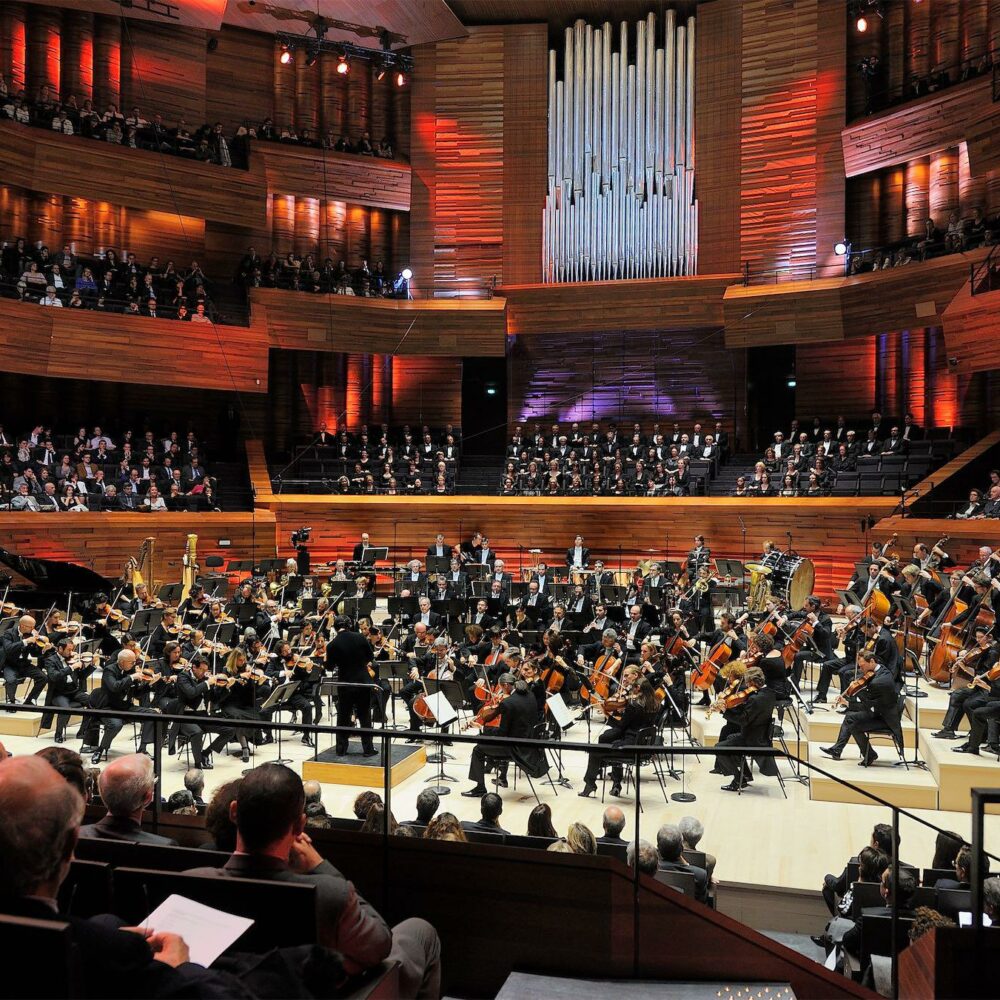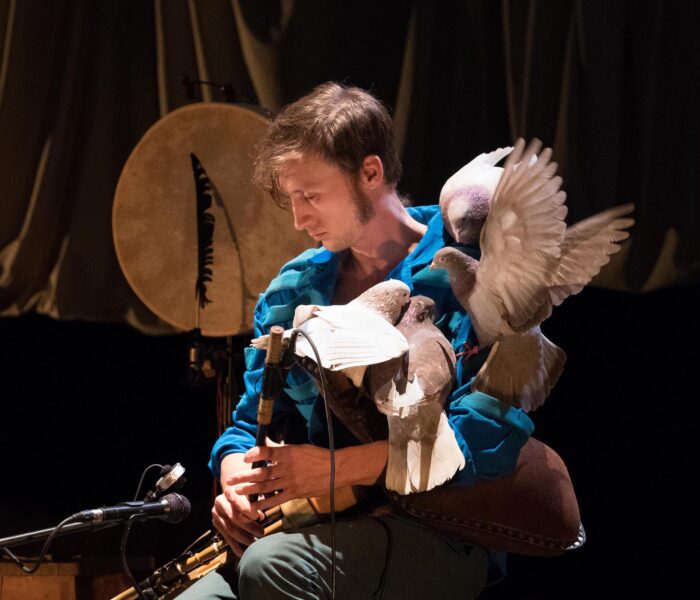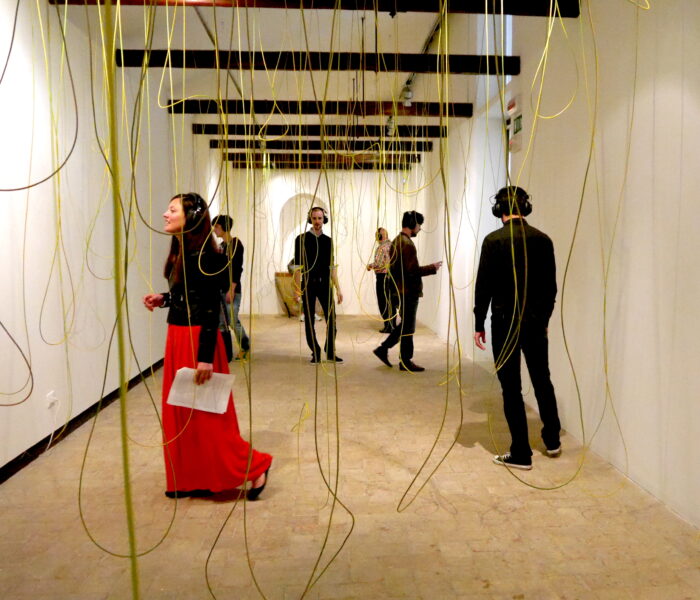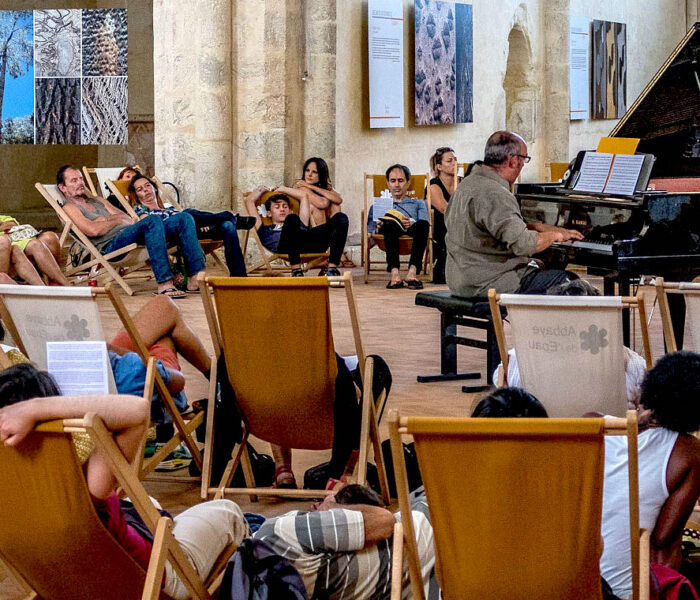Que retient-on d’un concert ? Quelles formes différentes peut-il prendre sans cesser d’être un concert ? Est-il un moment dédié aux œuvres et à leurs rapports ou une expérience esthétique et sociale ? Est-il le lieu de l’affrontement des écoutes ou celui d’une confrontation des époques et des styles ? Comment le construit-on et selon quels critères ? Comme le montrent ces questions vouées à demeurer ouvertes, le concert est l’objet d’une pluralité de perspectives. Nous essaierons d’en déployer ici quelques-unes.
Que retient-on d’un concert quand on ne cherche pas à le garder en mémoire, quand le souvenir en resurgit par hasard des années plus tard ? L’émotion singulière qu’une œuvre ou une interprétation a suscitée et dont la présence se refuse à passer : le regard d’Alfred Brendel quand, en 2008, au Théâtre du Châtelet, après avoir joué la Sonate D960, il fit face au public : la surprise que l’on pouvait lire qu’il y eût là des oreilles pour écouter et surprendre l’intimité de son tête-à-tête avec Schubert ; la forme en perpétuelle croissance de Jagden und Formen de Wolfgang Rihm dessinée avec tant de finesse et d’énergie par l’Ensemble Modern sous la direction de Dominique My, au milieu de l’édition 1999 du Festival d’Automne ; la transparence fusionnelle des timbres des instruments de l’ensemble Recherche interprétant à Witten, en 2005, L’Afrique d’après Tiepolo de Hugues Dufourt ; l’émergence épiphanique des sons d’alto, de tuba, de clarinette basse, de birbyne et de harpe dans les œuvres du cycle Occam d’Eliane Radigue que j’entendis au Collège des Bernardins en 2013 ; etc.
Il arrive que l’interprète fasse oublier l’œuvre ou que l’œuvre résiste à son interprétation, il arrive aussi souvent qu’une œuvre ou un.e interprète fasse oublier celles et ceux qui l’accompagnaient ce soir-là. Parfois, cependant, on se souvient d’autre chose, d’une confrontation, du lien singulier qui s’était noué entre plusieurs œuvres et plusieurs interprétations, de la manière dont elles s’étaient éclairées les unes les autres, dont elles s’étaient rehaussées ou contredites. Je pense par exemple à celui qui, en ouverture du festival Archipel 2003, s’est tissé entre deux œuvres de Luigi Nono et deux œuvres de Rebecca Saunders, Polifonica-Monodia-Ritmica (1951) et Canti per 13 pour le premier, Quartet (1998) et Cinnabar pour la seconde. Rien a priori ne semblait pouvoir relier ces œuvres créées à plus de quarante-cinq ans d’intervalle et qui s’inscrivent dans des traditions stylistiques on ne peut plus différentes. Et pourtant, quelque chose passa et se passa, particulièrement ente Canti per 13 (1955) et Cinnabar (1999), composées à peu près au même âge, 31 ans pour lui, 32 pour elle ; des œuvres de relative jeunesse, où les formes se cherchent encore mais où affleurent d’autant plus nettement les puissances naissantes de deux écritures.
Canti per 13 est un chant sériel pour treize instruments, sans voix, d’un lyrisme étrange, presque impossible, qui se réfugie dans les sons, l’usage que fait Nono du sérialisme lui permettant d’en singulariser les éclats et, à certains rares moments, de produire, déjà, d’admirables suspensions de son matériau. Ce lyrisme, on le retrouve tout autre dans Cinnabar, double concerto pour violon et trompette, petit ensemble et boîtes à musique. Le style sériel fait place à un travail sur les timbres et les modes de jeux qui à la fois fragmente la forme musicale et produit de nouveaux et singuliers alliages sonores. Un même geste se dessinait par-delà l’opposition des langages musicaux – qui d’un côté fragmente et espace, de l’autre arrête et suspend – un geste dont l’interprétation de l’ensemble Contrechamps, dirigé par Peter Hirsch, soulignait la proximité imprévue.
La forme concert
Le concert dont à l’exception du premier cité je parle depuis le début de ce texte, le concert de musique écrite contemporaine, n’est qu’un genre de concert parmi d’autres, aujourd’hui rare et largement minoritaire. Mais il ne l’a pas toujours été. Il fut même pendant longtemps la forme dominante de création et de diffusion de la musique : les premiers concerts publics remontent à la fin du XVIIe siècle en Angleterre (à partir de 1678, Thomas Britton organisa dans un loft londonien des concerts payants où Haendel et Pepusch se produisirent) et aux années 1720 en France (le Concert spirituel, fondé par le compositeur Anne Danican Philidor, donna ses premiers concerts en 1725 dans une salle du palais des Tuileries).
La forme concert et les modes d’écoute de la musique ont évidemment beaucoup évolué depuis le XVIIIe siècle, mais sa destination générale demeure : faire entendre à un public susceptible de les apprécier des œuvres susceptibles d’être écoutées pour elles-mêmes. Le concert en ce sens restreint, « moderne », fut une manière d’émanciper la musique de ses fonctions de cour et d’église. Après avoir loué les puissants et accompagné les fidèles, elle apprit à se célébrer elle-même, à devenir sa propre liturgie, à faire de ses lieux de nouveaux temples. Ce qui ne veut pas dire que la musique céda pour autant toute fonction, mais celle-ci changea de nature. Elle devint esthétique : celle de produire du beau pour ceux qui n’avaient d’autre droit à la musique que leur capacité à l’écouter ; et sociale en un nouveau sens : celui d’une classe qui ne disposait pour s’affirmer que de deux choses, l’argent et le goût.
La forme concert telle que nous la connaissons aujourd’hui mit toutefois un certain temps à se constituer. Ses trois coordonnées principales sont l’œuvre, le silence et le lieu. Un auditeur ou une auditrice d’un concert de musique écrite (baroque, classique, moderne ou contemporaine) écoute en silence des œuvres dans des salles conçues pour en accueillir la performance. Quand furent organisés les premiers concerts, le concept d’œuvre était encore en cours de stabilisation, le silence était relatif sinon exceptionnel et les lieux le plus souvent occasionnels. À partir de la fin du XVIIIe puis au cours du siècle suivant, des salles furent édifiées(1), les comportements se normalisèrent et on fit de l’interprétation des œuvres dans leur intégrité la finalité principale du concert. C’est autour de la figure de Beethoven, au début du XIXe siècle, que le concept d’œuvre et le type d’écoute qui lui sera associé, respectueuse et silencieuse, se seraient cristallisés : la fidélité à l’œuvre devint l’idée régulatrice du concert et se révéla déterminante dans l’évolution des attitudes d’écoute et d’interprétation.
L’expérience
Depuis quelques années, cependant, une autre perspective semble guider la théorie et l’histoire du concert, celle de l’« expérience ». Selon le musicologue et théoricien des médias allemand Martin Tröndle, tous les aspects du concert, non seulement les dispositifs de placement, la ritualisation des comportements, l’acoustique et l’éclairage des salles, mais aussi la durée, la professionnalisation des musiciens et la dramaturgie des programmes peuvent être considérés comme des facteurs permettant d’accroître l’attention du public et donc d’améliorer une « expérience » à la fois sociale et esthétique. « Notre première ébauche d’une théorie du concert, écrit-il, doit donc être complétée ainsi : le public choisit les variations de (la forme) concert qui sont en mesure d’améliorer son expérience esthétique et sociale. La théorie du concert présentée ici implique, d’une part, que les variations choisies dans (la forme) concert intensifient la ‘présence de la musique’ et, d’autre part, que des comportements sont apparus qui rendent ‘l’expérience de soi au sein de la communauté’ plus visible et plus intense. »(2) Cet accent mis sur l’« expérience » n’est pas le seul fait des théoriciens, de plus en plus d’œuvres prennent aujourd’hui la forme d’environnements polysensoriels et multimédiatiques qui viennent se substituer au concert traditionnel. Deux exemples récents parmi bien d’autres : Fosse de Franck Krawczyk, Christian Boltanski et Jean Kalman, pour 55 musicien.ne.s et quatre voitures éparpillé.e.s dans le parking du Centre Pompidou, une boucle itérable de 50 minutes pendant laquelle les auditeurs-spectateurs étaient libres de déambuler à leur guise, de suivre la soprano, de s’attacher à un percussionniste ou de s’asseoir sur une des quelques chaises disponibles (2020) ; Asterism d’Alexander Schubert, installation-performance de 35 heures et 34 minutes (d’un coucher à un lever de soleil) dans le Théâtre du Maillon à Strasbourg, où, dans un bain de lumières et de sons, on traversait une forêt, rencontrait un oracle, suivait des corps qui dansent, regardait la pluie tomber, s’endormait dans un recoin obscur, etc. (Festival Musica, 2021).
La dispute
Que le concert soit aujourd’hui majoritairement une « expérience » sensorielle et cognitive ne doit toutefois pas nous faire oublier qu’il fut aussi, tout au long du XIXe et jusqu’au milieu du XXe siècle, un champ de bataille où les camps et les goûts s’affrontaient, à grands renforts de claqueurs et de claqueuses. Comme l’écrit Peter Szendy : « Ce n’est pas seulement le lieu pour entendre des œuvres (bien que ce soit sans doute le champ où la notion même d’œuvre fut conquise). C’est aussi un théâtre où le public s’observe. Lui-même. C’est un espace où l’on vient regarder ceux qui écoutent. Où l’on se rend pour voir écouter, voire pour écouter écouter. (S’)écouter écouter, c’est en effet faire de l’œuvre un champ de bataille où divers camps s’affrontent. Mais ce champ de bataille (qui s’est ouvert avec la naissance du concert public, de la critique, de la presse musicale spécialisée…), cet espace polémique où l’on s’écoute écouter l’un l’autre, sur le mode tantôt de la complaisance, tantôt de la surveillance, bref, ce théâtre où s’exposent les auditeurs fait aussi, sans attendre, l’objet d’un mouvement de réappropriation intériorisante, dont je pourrais exhumer mille indices et témoignages. »(3) Si le concert n’est plus aujourd’hui le lieu de l’affrontement public des écoutes, qui préfèrent se disputer après que les applaudissements ont retenti, il lui arrive encore d’être contesté. L’annulation récente de celui de la compositrice et organiste Kali Malone programmé le 13 mai 2023 dans l’église Saint-Cornély, à Carnac, sous la pression d’un groupe de catholiques traditionnalistes, aussi désespérante soit-elle, nous rappelle que, pour un concert, le choix d’un lieu n’est jamais neutre.
L’entre-œuvres
Ce qui nous fait trois perspectives possibles selon que l’on choisit de privilégier la fidélité aux œuvres, l’expérience esthétique et sociale ou l’affrontement des écoutes et des goûts. Il en existe encore une quatrième, celle que théorisa François Nicolas à la fin des années 1990 sous le nom d’« entre-œuvres ». Le concert ne serait pas seulement le lieu où des œuvres se font entendre, il serait aussi et surtout celui où elles se rencontrent, entrent en rapport, se commentent ou se critiquent les unes les autres. Ce qui suppose que le concert soit plus qu’une concaténation d’œuvres, qu’il possède forme (qu’une programmation construit) et consistance (qu’il soit un). « Je présupposerai non seulement, écrit-il, qu’il y a des concerts (au sens fort que je donne à ce mot) mais qu’il faut qu’il y ait des concerts. Il faut veut dire : il est musicalement nécessaire qu’il y ait des concerts, c’est-à-dire des lieux musicaux où différentes œuvres entrent en rapport sensible (audible) entre elles, et composent ce que j’appellerai alors un entre-œuvres. Je pose que l’œuvre musicale a vocation à entrer en rapport avec d’autres œuvres, et non pas à s’enfermer dans sa finitude. »(4)
Au sens fort de François Nicolas, le concert est rare et imprévisible. Il est en effet difficile de savoir avant de les avoir effectivement écoutées si les œuvres choisies entreront en rapport et de quelle manière. Aucune programmation, aussi réfléchie soit-elle, ne peut présager de son résultat sensible. Un concert est un événement qui ne se produit qu’une fois. L’entre dont je fis l’expérience le 30 mars 2003 à Genève aurait pu ne pas avoir lieu. Il n’a d’ailleurs pas eu lieu pour tout le monde. Certains auditeurs n’entendirent dans ce concert que disparité et non-rapport. Il est cependant possible de comprendre cet « entre » en un sens faible : celui du lien générique qui déterminera le choix des œuvres programmées. Il peut être historique, thématique, instrumental, généalogique, formel, national, générationnel, monographique, etc. L’imagination des programmatrices et des programmateurs étant très grande, il est difficile de répertorier tous les types de concert qui ont été expérimentés depuis le XVIIIe siècle. Même si l’« entre » n’a pas lieu au sens fort, des œuvres auront été écoutées et chacune à sa manière aura affecté les corps et enrichi les esprits des auditeurs présents.
Le Domaine musical et la perspective historique
Il faut cependant se garder de considérer le concert comme un événement isolé. Une programmation se pense à l’échelle d’une saison ou d’un festival. C’est sa cohérence, et sa consistance, sur la longue durée qu’il convient d’estimer. Un bon exemple de programmation conséquente et réfléchie fut celle du Domaine musical, que Pierre Boulez fonda en 1953, et qui demeura actif jusqu’en 1973. Un des principes de sa programmation était la constitution de trois plans distincts qui désignaient autant des strates temporelles que des degrés variables de proximité : « un plan de référence » pour les œuvres anciennes susceptibles d’une « résonance actuelle », « un plan de connaissance » comprenant des « œuvres contemporaines encore mal connues » mais jugées importantes dans « l’évolution de la musique », « un plan de recherche » consacré à des œuvres nouvelles ou récentes de compositeurs en activité(5). Cette tripartition n’est évidemment pas sans rapport avec la situation historique de ce que l’on appelait encore l’avant-garde, soit une séparation, qui n’irait qu’en s’agrandissant, entre la création musicale et le public potentiel de ses auditeurs. Il s’agissait de pallier l’éloignement paradoxal du contemporain par une double proximité : celle, ponctuelle, avec des œuvres anciennes dont certains traits pourraient rencontrer ceux du présent (« l’isorythmie dans les motets de Machaut et de Dufay », « le chromatisme de Gesualdo », « l’inspiration formelle dans L’Offrande musicale de Bach », etc.) et celle, à construire, avec des œuvres plus récentes à même de constituer un socle pour l’écoute des celles qui étaient encore en train de s’écrire. Soit une proximité faite d’exceptions fructueuses avec le passé lointain et une proximité historiquement située avec un passé plus récent constitué en répertoire. Une discontinuité d’un côté, une continuité de l’autre.
Une telle programmation n’est pas sans réquisits. Elle suppose 1/la capacité de jouer au cours d’un même concert des œuvres que tout (excepté le trait saillant) oppose, 2/ la construction au long cours d’un répertoire contemporain, suffisamment ouvert pour éviter que n’y domine une seule tradition d’écriture, 3/ des œuvres nouvelles capables de supporter cette double confrontation, sans être assignées à un quelconque impératif stylistique. On devine assez bien les écueils potentiels, qui ne se révéleront que plus tard, de ce principe tripartite. Il fut cependant loin d’être complètement appliqué. L’examen par Jésus Aguila des saisons programmées par Pierre Boulez (1954-1966) révèle que seules 6 % des œuvres jouées appartenaient au plan de référence contre 43 % pour le plan de connaissance et 51 % pour le plan de recherche(6).
Le premier concert, en date du 13 janvier 1954, présentait une œuvre ancienne (L’Offrande musicale), deux œuvres du répertoire contemporain (le Concerto op. 24 de Webern et Renard de Stravinsky) et deux œuvres récentes dont une création (Polifonica-Monodia-Ritmica de Luigi Nono et Kontra-Punkte de Karlheinz Stockhausen, jouée pour la première fois dans son intégralité).(7) Dans ce contexte tout autre, l’œuvre de Nono devait certainement sonner différemment. Encadré par l’œuvre stylistiquement voisine de Stockhausen, mais esthétiquement très différente, et celle de Webern dont elle hérite, il eût semblé difficile de l’écouter autrement qu’à partir de son ancrage sériel. Le rapport à Bach et à Stravinsky est nettement plus intrigant. Ces deux œuvres aux antipodes ont-elles été à même de forcer l’îlot stylistique, de faire surgir entre Nono et Stockhausen des différences que seul l’avenir, alors inaccessible, aurait pleinement révélé ? L’Offrande musicale est-elle demeurée isolée des autres ou fut-elle au contraire éclairée par ces proximités imprévues ? Autant de questions auxquelles il est impossible de répondre aujourd’hui.
Il faudrait ajouter aux perspectives déjà citées une cinquième, celle de l’histoire. Le présent de la musique ne cessant de rejouer, et de réinventer son passé, le concert se doit d’être aussi le lieu de la confrontation des temps. Ce qui peut se faire, comme on vient de le voir, au moins de deux manières : 1/en discernant des héritages ou des généalogies, des emprunts manifestes ou des similitudes formelles, 2/ en provoquant des rencontres transhistoriques entre des œuvres que seul le concert peut réunir. Ces cinq perspectives ne sont évidemment pas exclusives. Ce sont plutôt des dimensions propres au concert en général. Un concert peut être en même temps une expérience esthétique, l’objet d’une dispute, le lieu d’un entre-œuvres et la confrontation fructueuse d’un présent à des strates disparates du passé. Je dirais même qu’il est d’autant plus riche qu’il comprend un plus grand nombre de ces aspects.
Bastien Gallet
1. L’Alte Gewandhaus de Leipzig où les auditeurs étaient disposés en vis-à-vis et non face à la scène fut inauguré en 1781, la Salle de Concert Pleyel à Paris où les fauteuils étaient mobiles en 1839, le Canterbury Music Hall à Londres où les auditeurs écoutaient assis autour de grandes tables, un verre à la main, en 1852 et le Musikverein de Vienne, qui devint le modèle de toutes les salles qui suivirent, en 1870.
2. « A Concert Theory », dans Classical Concert Studies. A Companion to Contemporay Research and Performance, Martin Tröndle (dir.), New York, Routledge, 2021, p. 11-28, ma traduction.
3. « L’art de la claque ou : s’écouter écouter au concert », dans Le Concert : enjeux, fonctions, modalités, F. Escal et F. Nicolas (dir.), Paris, L’Harmattan, 2000, p. 109-110.
4. « L’analyse musicale du concert : quelles catégories ? », ibidem, p. 9.
5. « Dépliant de présentation des premiers concerts du Domaine musical », cité par Jésus Aguila, Le Domaine musical, Pierre Boulez et vingt ans de création contemporaine, Paris, Fayard, 1992, p. 139-140.
6. Ibidem, p. 142-143.
7. Ibidem, p. 55.
Photo © Christophe Abramovitz



)



